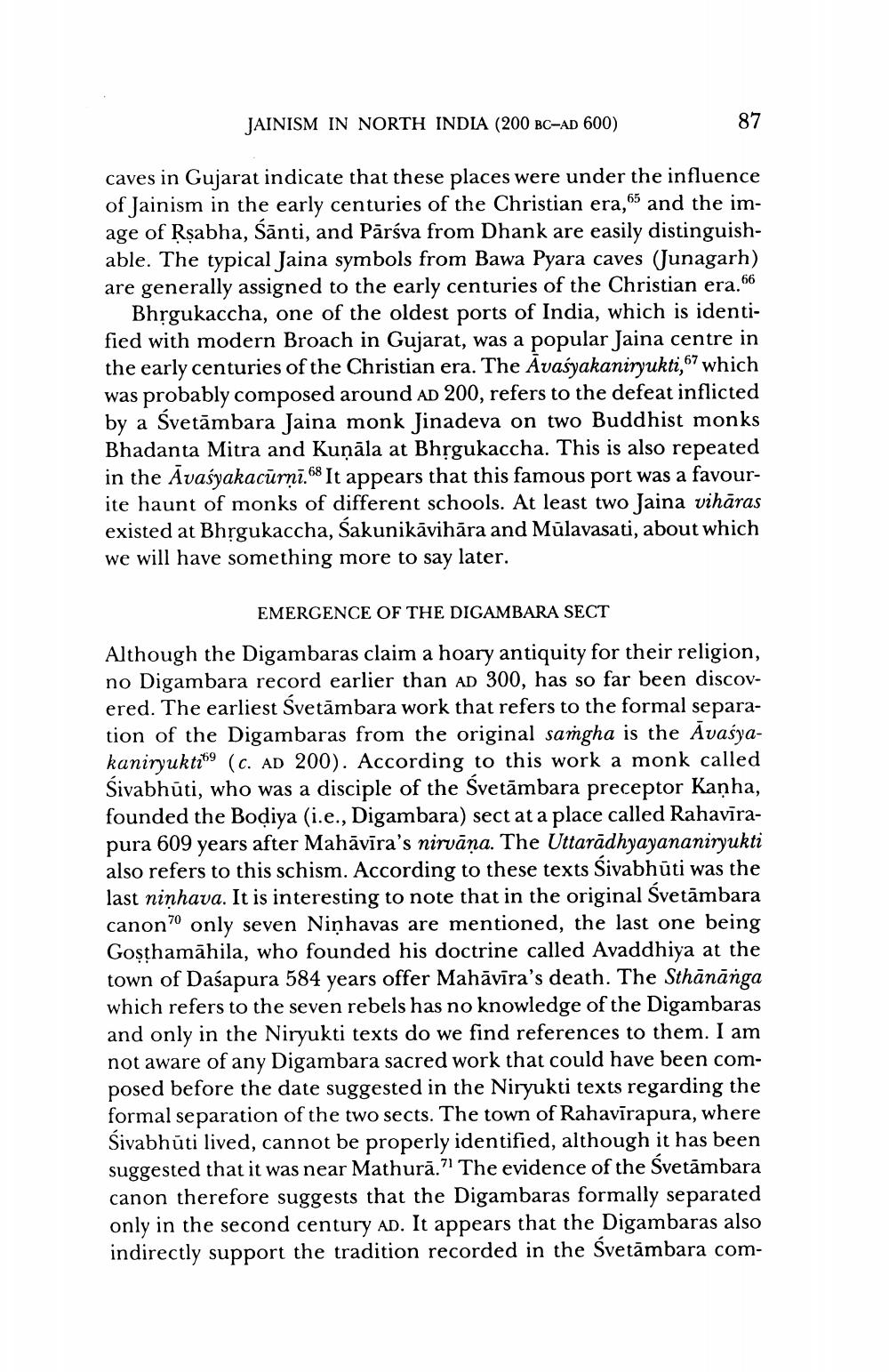________________
JAINISM IN NORTH INDIA (200 BC-AD 600)
87
caves in Gujarat indicate that these places were under the influence of Jainism in the early centuries of the Christian era, 65 and the image of Rșabha, śānti, and Pārśva from Dhank are easily distinguishable. The typical Jaina symbols from Bawa Pyara caves (Junagarh) are generally assigned to the early centuries of the Christian era. 66
Bhrgukaccha, one of the oldest ports of India, which is identified with modern Broach in Gujarat, was a popular Jaina centre in the early centuries of the Christian era. The Avaśyakaniryukti,67 which was probably composed around AD 200, refers to the defeat inflicted by a Svetāmbara Jaina monk Jinadeva on two Buddhist monks Bhadanta Mitra and Kuņāla at Bhrgukaccha. This is also repeated in the Āvašyakacūrņā.68 It appears that this famous port was a favourite haunt of monks of different schools. At least two Jaina vihāras existed at Bhrgukaccha, Sakunikāvihāra and Mülavasati, about which we will have something more to say later.
EMERGENCE OF THE DIGAMBARA SECT Although the Digambaras claim a hoary antiquity for their religion, no Digambara record earlier than AD 300, has so far been discovered. The earliest Svetāmbara work that refers to the formal separation of the Digambaras from the original samgha is the Avasyakaniryuktz49 (c. AD 200). According to this work a monk called Sivabhūti, who was a disciple of the Svetāmbara preceptor Kanha, founded the Bodiya (i.e., Digambara) sect at a place called Rahavīrapura 609 years after Mahāvīra's nirvana. The Uttarādhyayananiryukti also refers to this schism. According to these texts Sivabhūti was the last niņhava. It is interesting to note that in the original Svetāmbara canon" only seven Ninhavas are mentioned, the last one being Gosthamāhila, who founded his doctrine called Avaddhiya at the town of Daśapura 584 years offer Mahāvīra's death. The Sthānānga which refers to the seven rebels has no knowledge of the Digambaras and only in the Niryukti texts do we find references to them. I am not aware of any Digambara sacred work that could have been composed before the date suggested in the Niryukti texts regarding the formal separation of the two sects. The town of Rahavirapura, where Sivabhūti lived, cannot be properly identified, although it has been suggested that it was near Mathurā.” The evidence of the Svetāmbara canon therefore suggests that the Digambaras formally separated only in the second century AD. It appears that the Digambaras also indirectly support the tradition recorded in the Svetāmbara com




